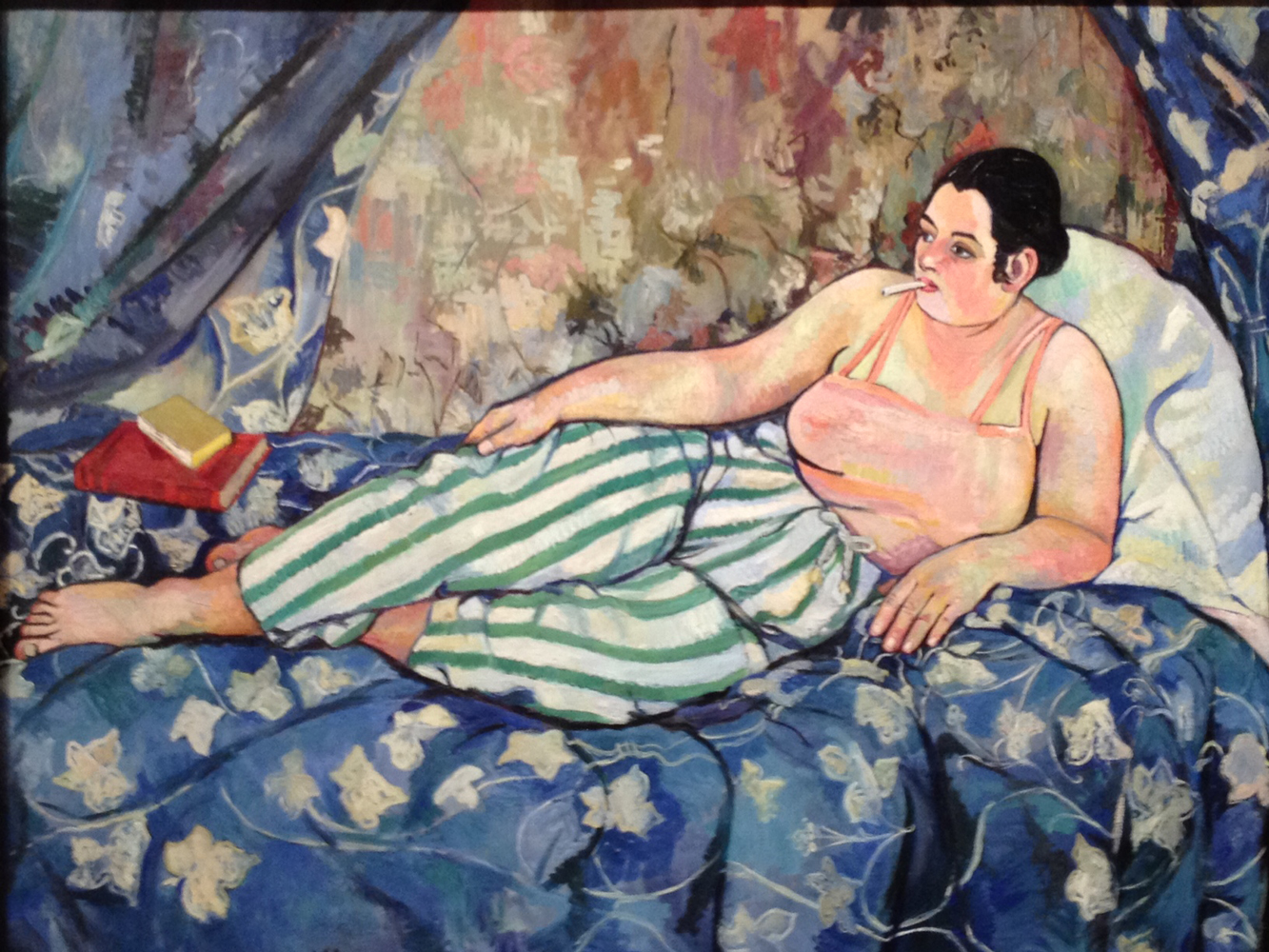Modernism and Post Modernism
Modernism begins at the end of the 19th century to the first half of the 20th century. As is in its name, Modernism is taking art from what it use to be and making it more modern. In essence what this means is the shift to more geometrical art and abstract art. Modernism also is usually associated with art in which the traditions of the past have been through aside for the spirit of experimentation. These came about due to attitude changes that came from scientific discoveries, new technology and the creativity of others. Modernism states that only paintings and sculptures can be art.
Sonia Delaunay & Abstract Art
 |
| Sonia Delaunay, Prismes Isotiques (Guerrilla Girls) |
 |
| Sonia Delaunay Couverture (1911) |
Abstraction came about in paintings and sculptures. Abstraction had vivid colors, often-thick application of paint, and real-life subjects but, inclined to emphasize geometric forms, distort forms for expressive effect, and use unnatural or arbitrary color. Chadwick mentions Sonia Delaunay who is know for her works in abstraction. One in particular in 1911 called "Couverture." We can see that she had the vivid colors and is inclined to geometric forms and distorted forms. This was her contribution to Modernism. Chadwick states "Delaunay soon became firmly convinced that modernity could best be expressed through a dynamic interplay of color harmonies and dissonances which replicated the rhythms of modern urban life" (Chadwick, 260). Another example is her artwork titled "Prismes Isotiques" (Guerrilla Girls, 61). It is exactly how one would assume abstract art would look like, it can be interpreted in many ways and the exaggerated shapes and colors keeps the audiences attention. and changes how to represent the subjects. No longer are we trying to understand the past arts but moving toward different pieces. Her interest was in the dynamics of surface design. She worked with textiles and embroidery and learned to see color freely. Unfortunately for a while her career took a backseat. She played second fiddle and put her husband's career first and did not start painting again until his death.
The Female Body: Modernist Representation
 |
| Suzanne Valadon, The Blue Room (1923) |
 |
| Frida Kahlo, Broken Column |
Post-Modernism
| Faith Ringgold, Die |
 |
| Betya Saar, Liberation of Aunt Jemima |
What is post-modernism? Post-Modernism is exactly the opposite of Modernism. It tells us that anything can be art, photography, pottery, billboards, etc. It deconstructs what makes art essentially art. Also it states that art is for everyone not just those in the elite higher social class. It brought about political movements, feminist movements and LGBTQ movements. One of these movements which combated connections of patriarchy, racism and imperialism was done by Faith Ringgold in her work "Die" (1967). It was a "twelve foot mural of a street riot" (Chadwick, 342). Ringgold's work seems to continue to be relevant today and could possibly be used to help us understand the Black Lives Matters movement that has gained a voice in our current time. (To get a short history on BLM movement: Visit Here) Another artwork for post-modernism that we can look at is by Betye Saar's "The Liberation of Aunt Jemima" (1972). Saar did this artwork to combat the stereotypical way in which blacks are looked at in a white man's culture. She is seen holding a revolver and a rifle. It takes a household image that we see on syrup and pancake mix boxes and turns it into a different narrative. Post-modernisms job is to make us question the things we
take as truth. It asks more questions than it answers.
By: Leslie Fontanez
Works Cited:
Chadwick, Whitney. Women, Art, and Society. 4th ed. New York, N.Y.: Thames and Hudson, 1990. Print.
The Guerrilla Girls' Bedside Companion to the History of Western Art. New York: Penguin, 1998. Print.
No comments:
Post a Comment